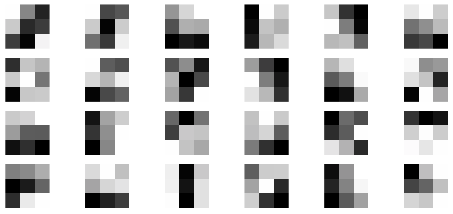Lagrange Basis#
Given \(d+1\) points \((t_0,y_0),\dots,(t_d,y_d)\), the Lagrange basis of \(\mathbb{P}_d\) (with respect to \(t_0,\dots,t_d\)) is given by \(\{ \ell_0(t),\dots,\ell_d(t) \}\) where
The essential property of these polynomials is
Given \(d+1\) points \((t_0,y_0), \dots,(t_d,y_d)\), polynomial interpolation with respect to the Lagrange basis seeks a polynomial of the form
such that \(p(t_k) = y_k\) for each \(k=0,\dots,d\). Each point defines an equation and we get a linear system \(A \boldsymbol{c} = \boldsymbol{y}\)
The essential property of Lagrange polynomials implies that \(A\) is the identity matrix and so \(\boldsymbol{c} = \boldsymbol{y}\) therefore
Newton Basis#
Given \(d+1\) points \((t_0,y_0),\dots,(t_d,y_d)\), the Newton basis of \(\mathbb{P}_d\) (with respect to \(t_0,\dots,t_d\)) is \(\{ \pi_0(t),\dots,\pi_d(t) \}\) where
An important property of these polynomials is
Given \(d+1\) points \((t_0,y_0), \dots,(t_d,y_d)\), polynomial interpolation with respect to the Newton basis seeks a polynomial of the form
such that \(p(t_k) = y_k\) for each \(k=0,\dots,d\). Each point defines an equation and we get a linear system \(A \boldsymbol{c} = \boldsymbol{y}\)
The property of Newton polynomials implies that \(A\) is a lower triangular matrix
Consequently, the system \(A \boldsymbol{c} = \boldsymbol{y}\) is solved by forward substitution.
An advantage of the Newton basis is that updating the interpolating function with additional data is simple. In particular, suppose we have data points \((t_0,y_0),\dots,(t_d,y_d)\) and compute the coefficients of the interpolating polynomial
Now suppose we get another data point \((t_{d+1},y_{d+1})\). We can find the interpolating polynomial \(p_{d+1}(t)\) for the full data set by
where the only new coefficient is
This observation also leads to an iterative algorithm to compute Newton interpolation in general: given \((t_0,y_0),\dots,(t_d,y_d)\), find \(p_0(t)\) using only \((t_0,y_0)\) and then find \(p_{k+1}(t)\) from \(p_k(t)\) for each \(k\) using the formula above.
Example#
Recall that there is a unique polynomial \(p(t)\) of degree (at most) \(d\) which interpolates \(d+1\) points \((t_0,y_0), \dots , (t_d,y_d)\) if the values \(t_0,\dots,t_d\) are different. Therefore the monomial, Lagrange and Newton bases all produce the same result but computed and represented differently.
Find the interpolating polynomial for \((-1,1),(0,0),(1,1)\) using each of the monomial, Lagrange and Newton bases. We know the result is \(p(t) = t^2\). Begin with monomial interpolation and setup the Vandermonde matrix and solve the linear system \(A \boldsymbol{c} = \boldsymbol{y}\)
and therefore \(c_0 = c_1 = 0\) and \(c_2 = 1\) and so \(p(t) = t^2\). Now construct the Lagrange basis
and the interpolating polynomial
Now construct the Newton basis
Each point yields an equation \(p(t_k) = y_k\) for \(k=0,1,2\) and so we solve the linear system
The interpolating polynomial is again
